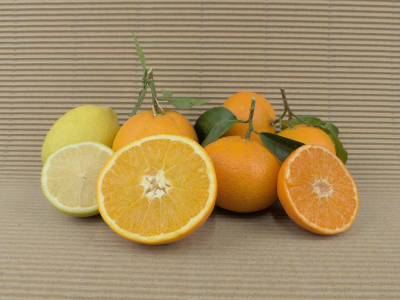Mandarina Orri
Las mandarinas Orri son un híbrido desarrollado a partir de la variedad Orah. Son conocidas por su sabor único, con un equilibrio perfecto entre dulzura y acidez, y por su textura jugosa y carnosa. Además, tienen una piel fina y fácil de pelar, son de tamaño grande y uniforme y prácticamente no tienen semillas.
Las mandarinas Orri han ganado numerosos premios por su sabor excepcional, incluyendo el Premio a la Mejor Mandarina en la feria Fruit Attraction de Madrid o con el premio “Superior Taste Award” del “Internacional Taste Institute (ITI)” de Bruselas, ambos en 2023.
Lemons
We serve lemons of the Eureka and Vernia varieties. These varieties have few differences between them,
sometimes even more similar to lemons of different varieties than lemons of the same variety. They are
of medium or small size. They are spherical or oval in shape with a short nipple, and have a smooth,
thin rind. The pulp is juicy with a high juice content. They have a long post-harvest life, of about
30 days or even more.
Its harvesting period is, depending on the year, from the beginning of December to mid-April.
Conventional farming
These fruits come from conventional farming, which means they may have
received conventional treatments during their production. Once harvested,
they are only cleaned with a cloth before being marketed. No waxes, fungicides,
or other preservatives are added to them. The treatments applied by
our farmers exclusively use products authorized by the EU. Nevertheless, a
significant portion of the fruits we serve comes from orchards that have
not received any pesticide treatments.


